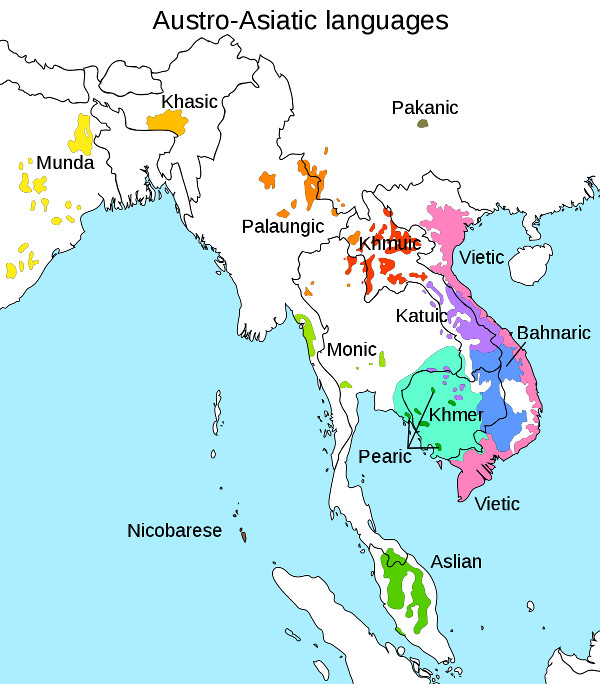
There has been a discussion of Michael Witzel’s ideas in the comments below. Long familiar with his thesis that a Munda-like language was dominant in the northern Indus valley and in the Gangetic plain, I have also been long skeptical of it.
The reason for me is simple: I have leaned to the position that Munda are intrusive from Southeast Asia. Over the past 10 years my confidence in this proposition as grown. Let’s review
1) They speak an Austro-Asiatic language. Most Austro-Asiatic languages are in Southeast Asia and seem to have spread from the north to the south
2) The Munda have genetic signatures on the Y chromosome and some of their traits which are distinctive to East Asians and totally unrelated to any other South Asians. These genetic signatures are not found in South Asia outside of the Munda areas, and northeast India (i.e., they are not present in the Indus or Gangetic plains).
3) The most common Y chromosome of the Munda seems to be from Southeast Asia. That is, Southeast Asian lineages are basal and more diverse than the ones in India.
4) Genetic data from ancient DNA indicate that Austro-Asiatic people did not arrive in northern Vietnam until 4,000 years ago. To me this, this implies they arrived in India well after 4,000 years ago.
5) We now suspect that Indo-Aryans arrived well after 4,000 years ago to the Indus valley. The Munda and Indo-Aryans could not have met in that region 3,500 years ago in any reasonable scenario.
Let’s assume that Witzel and others are correct that the early Indo-Aryans and the languages/toponyms of the Gangetic plains do not show Dravidian influence. How could that be? It could be that in the northern Indus valley a non-Dravidian language was dominant. Consider Burusho, a linguistic isolate. Mesopotamia was long divided between a Semitic north and a Sumerian south.
Second, the genetic data seem to suggest that some Indo-Aryan groups have more AASI and more steppe than groups to their west. North Indian Brahmins vs. Sindhis are an example. To me, this is indicative of the possibility that the Indo-Aryans pushed past areas where Dravidian languages were dominant, and only AASI hunter-gatherers were flourishing. The lack of a Dravidian substrate is because the AASI groups the Indo-Aryans encountered were not Dravidian speakers.
 From my personal blog:
From my personal blog: